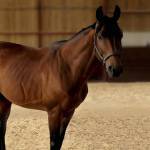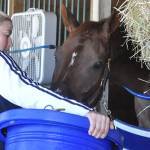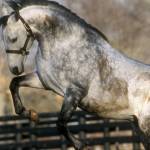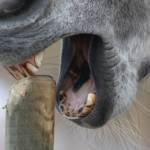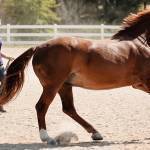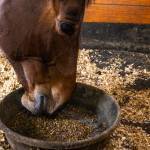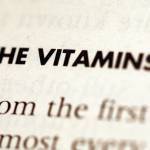Shivers in Warmblood and Draft Horses: What It Is and What to Do

Heavy horses, such as draft breeds and Warmbloods, can be affected by a number of breed-related disorders, including several that target the musculoskeletal and neurological systems.
“Shivers is a relatively rare condition referred to as an equine movement disorder. It causes muscle tremors, abduction (movement of a limb away from the midline of the body), and abnormal flexion and extension of the hind limbs when lifting the leg, backing, or moving forward. What makes shivers challenging to diagnose is that it can occur in one limb or both, consistently or intermittently. In severe cases, horses are unable to hold up the affected hind limb,” explains Peter Huntington, B.V.Sc., M.A.C.V.Sc., director of nutrition at Kentucky Equine Research (Australia).
The exact cause of shivers remains unclear and can be difficult to differentiate from equine polysaccharide storage myopathy (PSSM) and stringhalt. According to recent publications*,**,***, horses that are truly affected with shivers are chronic, gradually progressive cases that usually start before the age of 7 years.
Shivering affects backing, with either hyperextension or hyperflexion of hind limbs, and can gradually progress to involve intermittent abducted hyperflexion during forward walking. Shivering cases that involve hyperflexion may appear similar to acquired bilateral (Australian) stringhalt during backing; however, stringhalt can be distinguished from shivering by the acute onset and nature of hyperflexion during walking***.
Confirmed cases of shivering have muscle twitching, muscle atrophy, reduced strength, and exercise intolerance. Unlike tying-up, more males are diagnosed with shivering, and no potential triggers have yet been identified.
In terms of management, the following strategies have been attempted:
- Diets where energy comes from fat and fiber with low levels of starch and sugar;
- Increasing the levels of antioxidants vitamin E and selenium in the diet;
- Continuing to exercise affected horses or even increasing activity level; and
- Administration of various drugs, such as nonsteroidal anti-inflammatories (e.g., phenylbutazone or “bute”), gabapentin, phenytoin, and muscle relaxants.
Of those options, none had any beneficial effect, except farriers noticed a temporary cessation of signs of shivers when affected horses were treated with alpha2-agonist sedatives (e.g., xylazine). In fact, no owner of an affected horse reported any permanent improvement following any change in management or drug administration*.
Interestingly, owners of shivering horses report the following factors appear to cause worsening of clinical signs:
- Reduced turnout;
- Either excessive or limited exercise; and
- Illness.
“Researchers have recently renewed their interest in this condition and future studies will hopefully shed light on how best to help horses with shivers,” concludes Huntington.
*Draper, A.C., J.B. Bender, A.M. Firshman, et al. 2015. Epidemiology of shivering (shivers) in horses. Equine Veterinary Journal. 47(2):182–187.
**Valberg, S.J., S.S. Lewis, J.L. Shivers, et al. 2015. The equine movement disorder “shivers” is associated with selective cerebellar Purkinje cell axonal degeneration. Veterinary Pathology. In press.
*** Draper A.C.E., T.N. Trumble, A.M. Firshman, et al. 2015. Posture and movement characteristics of forward and backward walking in horses with shivering and acquired bilateral stringhalt. Equine Veterinary Journal. 47(2):175–181.

